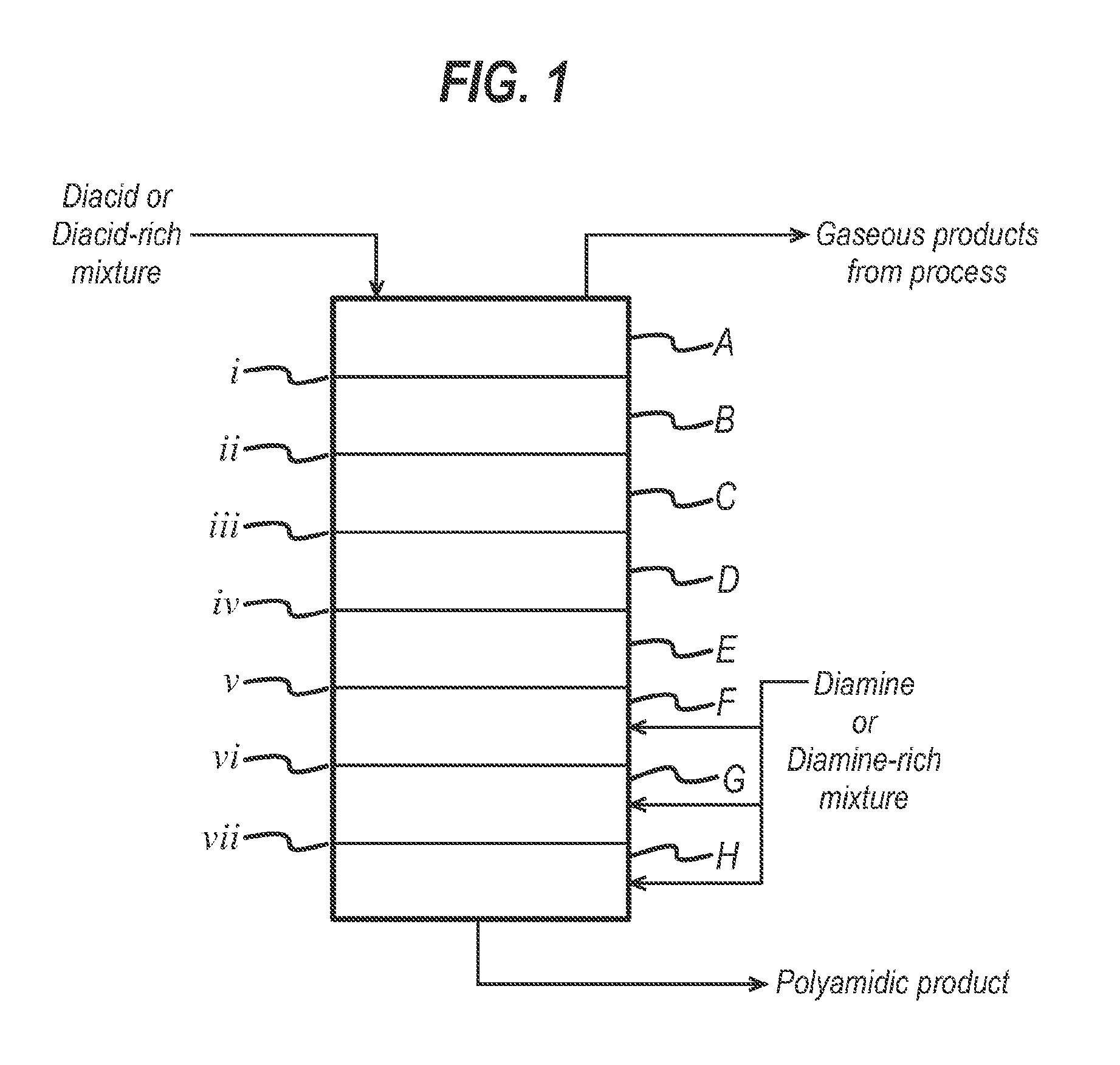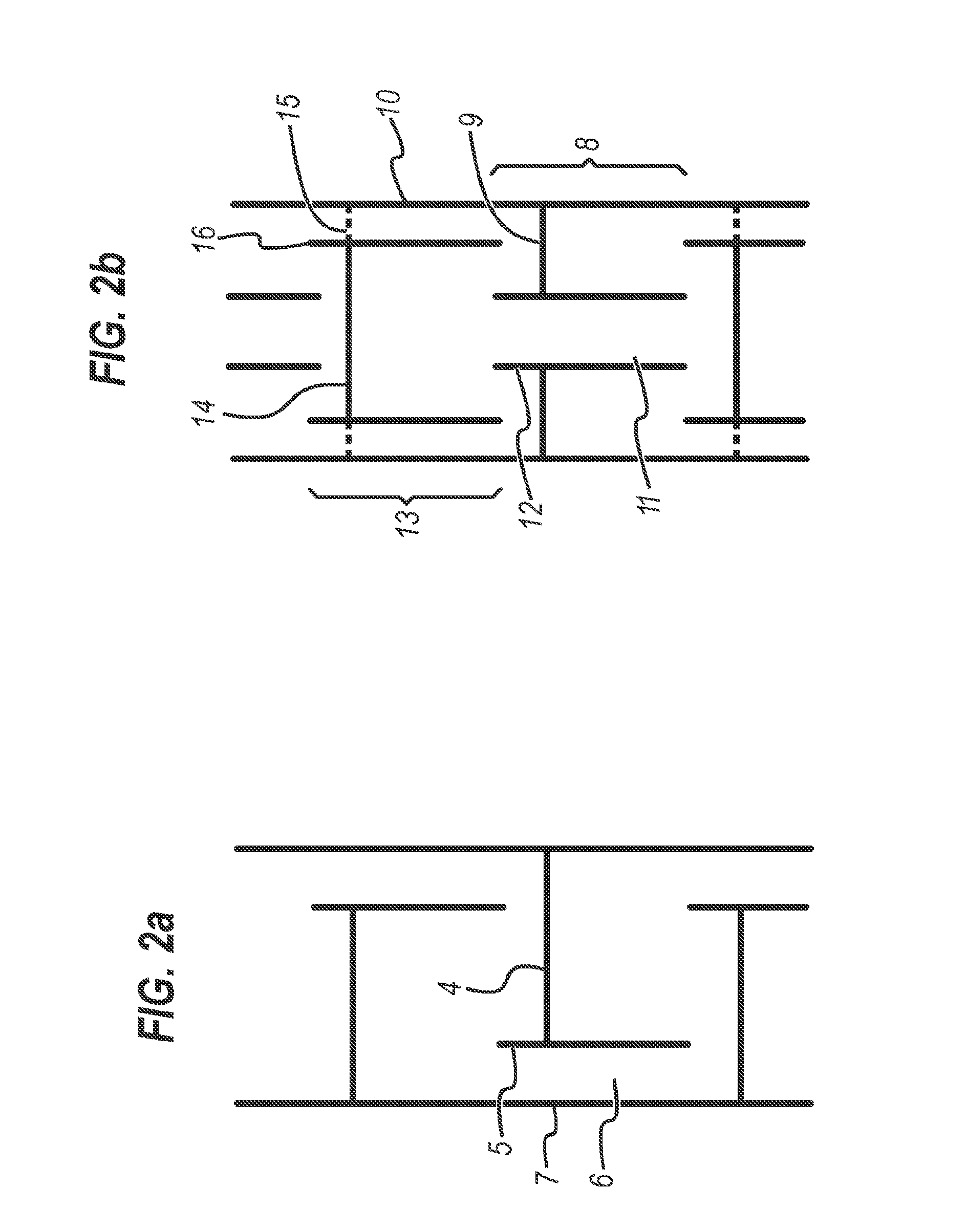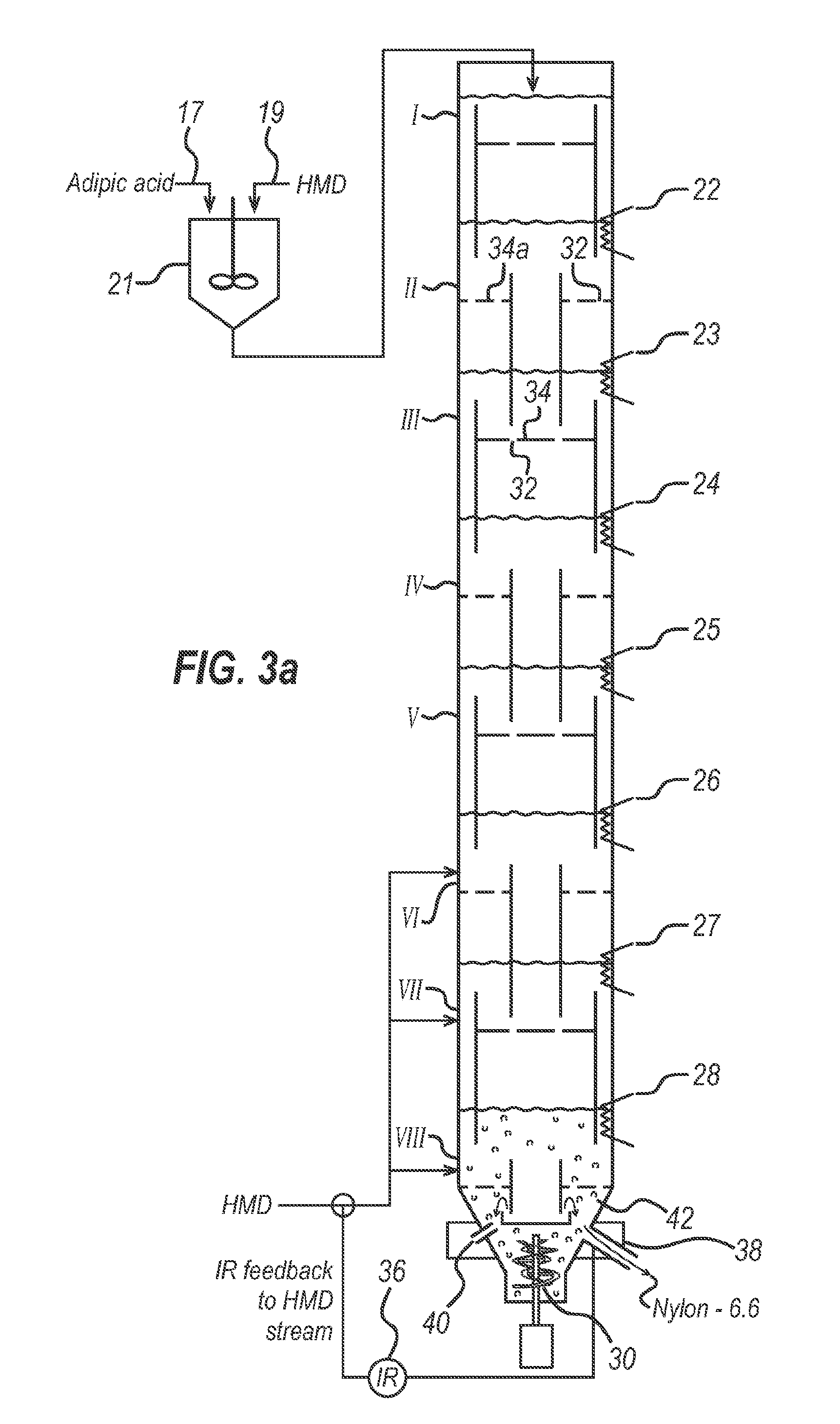Continuous polyamidation process - i
a polyamide and process technology, applied in the direction of chemical/physical/physical-chemical processes, liquid-liquid reaction processes, chemical apparatus and processes, etc., can solve the problems of reactor complexity and process scale-up complexity, chemical degradation of products, and increase in viscosity and gel build-up, so as to improve reactor size and output, simplify reactor design, and facilitate process scale-up and design
- Summary
- Abstract
- Description
- Claims
- Application Information
AI Technical Summary
Benefits of technology
Problems solved by technology
Method used
Image
Examples
example 1
[0084]Adipic acid (AA) and hexamethylene diamine (HMD) are fed into a mixing tank at 162 lb / hr and 38 lb / hr, respectively. The heated mixture is fed into the top of an eight-stage reactor column at a rate of 199 lb / hr. Gaseous HMD is fed into the lowest three stages of the reactor at a rate of 90 lb / hr. During the reaction process, a stream C of steam is fed from a pressurised plenum at a rate of up to 20 lb / hr into a conical chamber below the lowest stage at the bottom of the reactor, the conical chamber being the region below the lowest stage in which is accumulated liquid phase material P rich in high molecular weight polyamide. The reactor is not equipped with an agitator, but otherwise comprises the features described in FIGS. 3a to 3d.
[0085]During operation of the reactor according to the invention, gaseous steam exits from the top of the reactor at a rate of 40 lb / hr without additional steam from stream C, or 60 lb / hr with additional steam from stream C, wherein the vapour e...
example 3
Column with Steam Sparging Made at 15.5 Inch Internal Diameter
[0093]A unit is designed for a nominal polymer production rate of 250 pounds per hour. A ten stage column is designed having 15.5 inch internal diameter for the top nine stages. The lowest stage smoothly reduces diameter in the head space down to a liquid inventory section having a constant internal diameter of 12 inches and a working depth of 24 inches (similar to that shown in FIG. 3g). The top nine stages are fitted with weirs to regulate the liquid inventory on each stage such that the hold-up time on each stage averages about 15 minutes. The inventory on the lowest stage is regulated by controlling the speed of the outlet pump.
[0094]This unit is fitted with temperature regulating jackets and coils identical to those of example 1. The temperature of the melt is again controlled.to reach 275° C. in the lowest stage.
[0095]The column is fitted with an agitator on the lowest stage, designed to turn at between 15 and 50 rp...
example 4
Column with Steam Sparging Made at 15.5 Inch Internal Diameter
[0099]A unit is designed for a nominal polymer production rate of 250 pounds per hour. A ten stage column is designed having 15.5 inch internal diameter for the top nine stages. The lowest stage is described by FIG. 3f with an unsparged but agitated conical section within a surrounding sparged melt pool. As shown in FIG. 3f, the lowest stage is also fitted with a plenum enabling the introduction of vapour through the melt pool. The top nine stages are fitted with weirs to regulate the liquid inventory on each stage such that the hold-up time on each stage averages about 15 minutes. The inventory on the lowest stage is regulated by controlling the speed of the outlet pump.
[0100]This unit is fitted with temperature regulating jackets and coils identical to those of example 1. The temperature of the melt is again controlled.to reach 275° C. in the lowest stage.
[0101]The column is fitted with an agitator only within the conic...
PUM
| Property | Measurement | Unit |
|---|---|---|
| viscosity | aaaaa | aaaaa |
| viscosity | aaaaa | aaaaa |
| viscosity | aaaaa | aaaaa |
Abstract
Description
Claims
Application Information
 Login to View More
Login to View More - R&D
- Intellectual Property
- Life Sciences
- Materials
- Tech Scout
- Unparalleled Data Quality
- Higher Quality Content
- 60% Fewer Hallucinations
Browse by: Latest US Patents, China's latest patents, Technical Efficacy Thesaurus, Application Domain, Technology Topic, Popular Technical Reports.
© 2025 PatSnap. All rights reserved.Legal|Privacy policy|Modern Slavery Act Transparency Statement|Sitemap|About US| Contact US: help@patsnap.com



